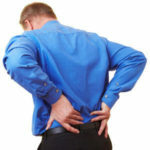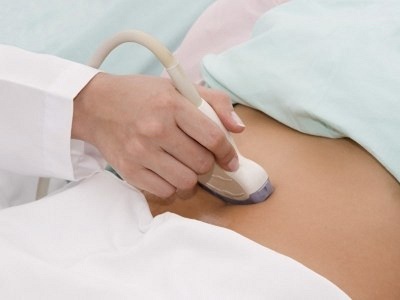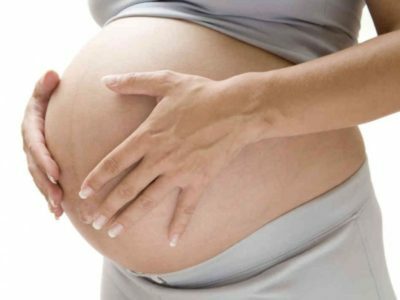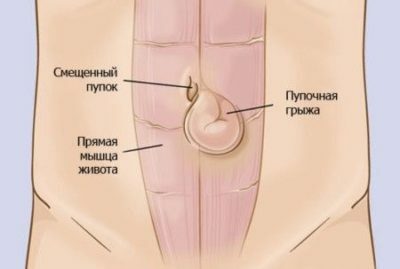 Intervertebral disc herniation in the cervical spine is a fairly common condition, which for the first time is most often detected in middle-aged people.
Intervertebral disc herniation in the cervical spine is a fairly common condition, which for the first time is most often detected in middle-aged people.
The thickness of the discs between the vertebrae in this department is usually not large. Accordingly, the space between adjacent vertebrae, as well as the place for passage of nerves, is also not large, which allows even an inconspicuous and insignificant hernia to lead to compression of nerve fibers, causing pain and other neurological disorders.
 When choosing an ointment for back pain, it is advisable to read a number of recommendations or consult a doctor.
When choosing an ointment for back pain, it is advisable to read a number of recommendations or consult a doctor. When anesthetized, diclofenac is often used in injections and pills, the instructions to this drug are available on our website.
Variety of cervical hernia manifestations?
Depending on the location of the hernia, signs may vary. Considering the effect of a hernia on the nervous end, the place and nature of the manifestation of pain and other neurological symptoms can be divided into several groups.
At the pressure on the , the fifth nerve root ( located between the 4th and 5th vertebrae, the next root is, respectively, one vertebra below), muscle weakness, shoulder pain and, mainly, deltoid muscle may appear. Change of sensitivity in this case often does not happen.
Effects on The sixth nerve root of often leads to muscle weakness, which is responsible for flexion at the elbow( mainly the biceps) and wrist extension. In the area of the thumb, soreness, tingling and numbness are not uncommon.
For the , the seventh root of the is characterized by the same symptoms in the triceps( the muscle that is at the back of the shoulder and is responsible for the extension of the arm at the elbow) and the extensor muscles of the fingers, as well as soreness and paresthesia( numbness, tingling) in the lower back of the shoulder andmiddle finger.
When the 8th root is involved, there is weakness in the handshake and the presence of pain and paresthesias in the little finger.
It can be added that the considered symptoms are the most characteristic, but taking into account the individual anatomical features of a person, they can vary to varying degrees in each individual case.
Diagnosis variants of the disease
The diagnosis of this pathology is based on the receipt of clinical data( complaints and examination), as well as special instrumental research methods. The best method of diagnosing herniated intervertebral discs is magnetic resonance imaging, which allows you to obtain accurate images of any smallest changes and is completely non-invasive( without intrusion into body tissue).

Development of the intervertebral hernia of the cervical department
Computed tomography in combination with myelography is also very indicative. However, in view of the fact that to carry out this manipulation it is necessary to introduce a coloring substance into the cavity of the spinal canal, its function is usually of an auxiliary nature.
The same method can be used for diagnostics with the method of electromyography, the essence of which is to study the response to electrical stimulation of individual muscles. This often helps to ward off suspicion of other diseases that have similar symptoms with an intervertebral hernia.
Exemplary treatment plan for cervical hernia
Cervical spine hernia in the vast majority of patients is well suited to conservative ( non-surgical) therapy, which is basically aimed at pain relief of and related neurological disorders.
Pain sensations occur as a result of the pressure of the herniated disc on the nerve fiber in combination with inflammation of the surrounding tissues, so the use of non-steroidal anti-inflammatory drugs is justified.
If necessary, steroids, diuretics, muscle relaxants, narcotic analgesics, antidepressants and hypnotics may be included in the treatment.
In addition to drug therapy, there are a number of non-surgical treatments for that can help alleviate the symptoms of the disease. These include:
- physiotherapy , exercise therapy and gymnastics( performing a series of exercises, as well as the use of heat, cold and ultrasound treatment methods at the initial stage helps to reduce muscular spasm and relax the spine);
- neck traction ( pulling the head can help reduce the pressure on the nerve roots, this is not always effective, but the method is simple, which, if effective, allows it to be used successfully by the patient at home);
- manual therapy ( makes it possible to relax the tension muscles);
- osteopathy ( some osteopathic manipulations and methods for restoring normal joint mobility can be quite effective);
- use of braces ( or orthopedic cervical collar, which provides additional unloading and rest for the cervical spine);
- injection of ( an injection into the space between the spinal cord shells of steroids or the administration of a drug in the immediate vicinity of the nerve effectively reduces inflammation and pain).
The following operations can be performed:
- anterior discectomy with spondylodesis ( performed most often, with a small hole in the skin of the front surface of the neck removing the intervertebral disc and merging the vertebrae);
- anterior discectomy without spondylodesis ( similar to the previous procedure, only after removing the disc, the remaining space remains open, and the vertebrae grow together independently);
- posterior discectomy ( performed from the rear access and used when the hernia is in the posterolateral section of the disc).
Probability of complications in surgical treatment

Collar for cervical hernia
Possible complications of spinal surgery for a disc herniation may include damage to the trachea, esophagus, blood vessel( 1 case per 1000 operations).
In approximately 1% of cases, delaying the return laryngeal nerve during surgery can cause hoarseness, which usually occurs within two to three months. Sometimes spondylodesis( fusion) can be untenable, which leads to instability of the vertebrae and the need for a re-operation. Less than 1% of cases have infectious complications.
Operations with front access are of low traumatic nature, so they can be performed on the principle of "one-day surgery"( outpatient or with a hospital stay of no more than a day).
After surgery, in most cases, wearing an orthopedic cervical collar is indicated, as well as a temporary restriction of physical activity.
 In case of cervical osteochondrosis, massage can help. Pay attention to the choice of a specialist, the result of treatment depends on this.
In case of cervical osteochondrosis, massage can help. Pay attention to the choice of a specialist, the result of treatment depends on this. On cheap gelatine Fastum gel read in this article http: //osteocure.ru/lekarstva/ analogi-fastum-gel.html



